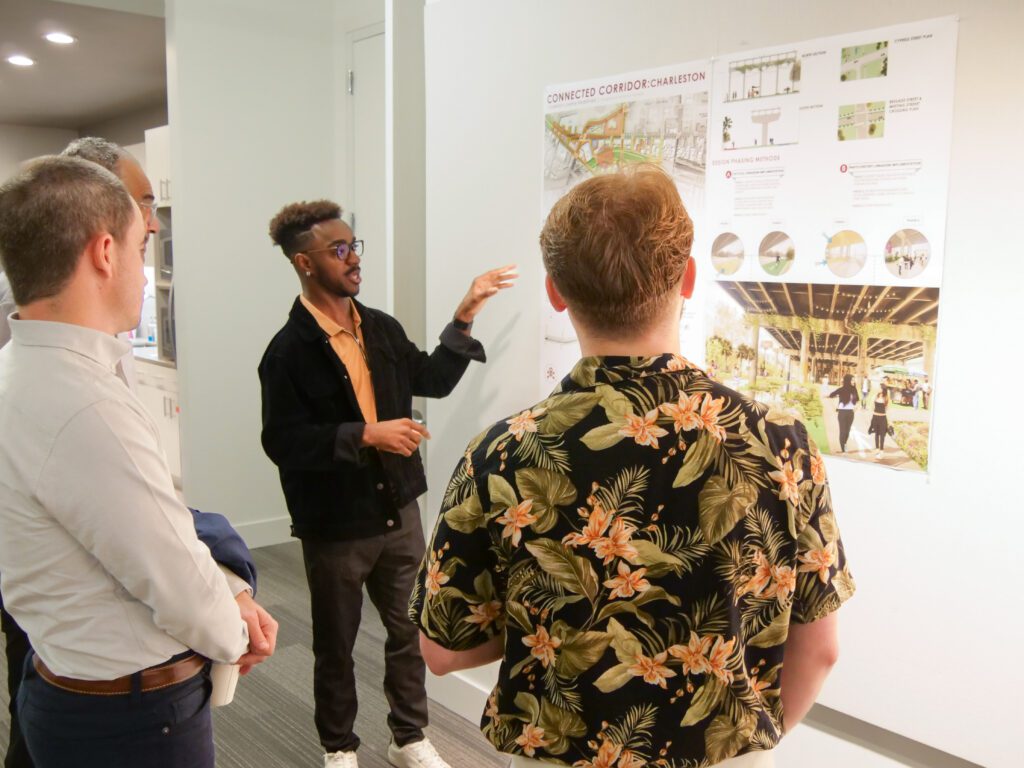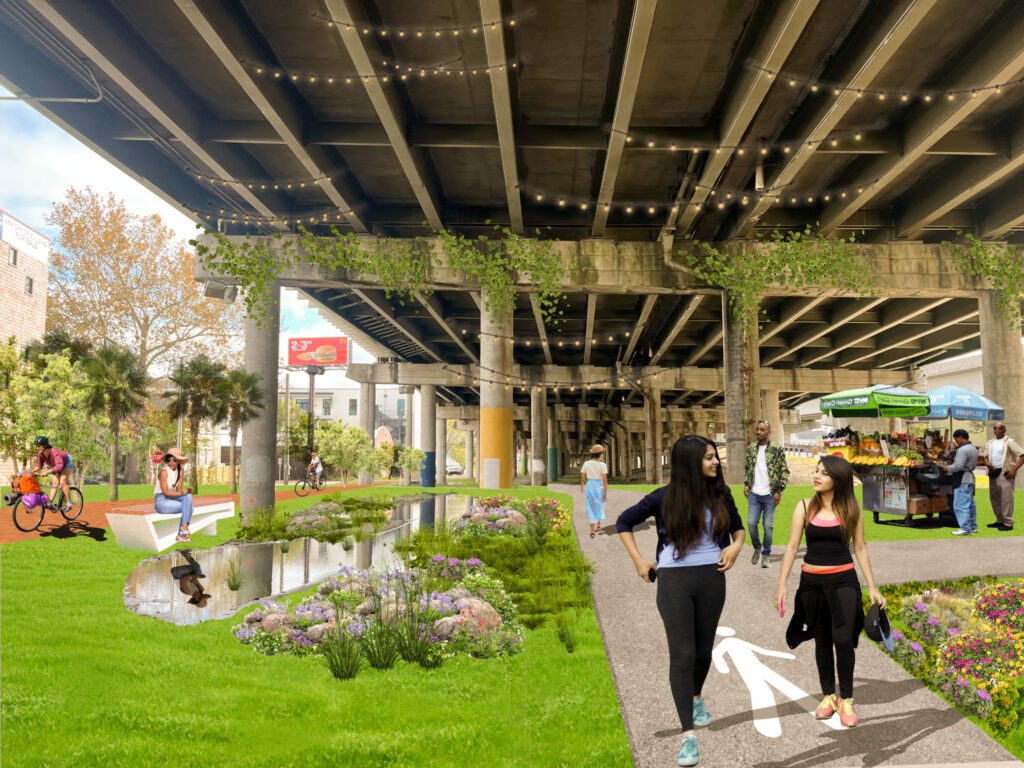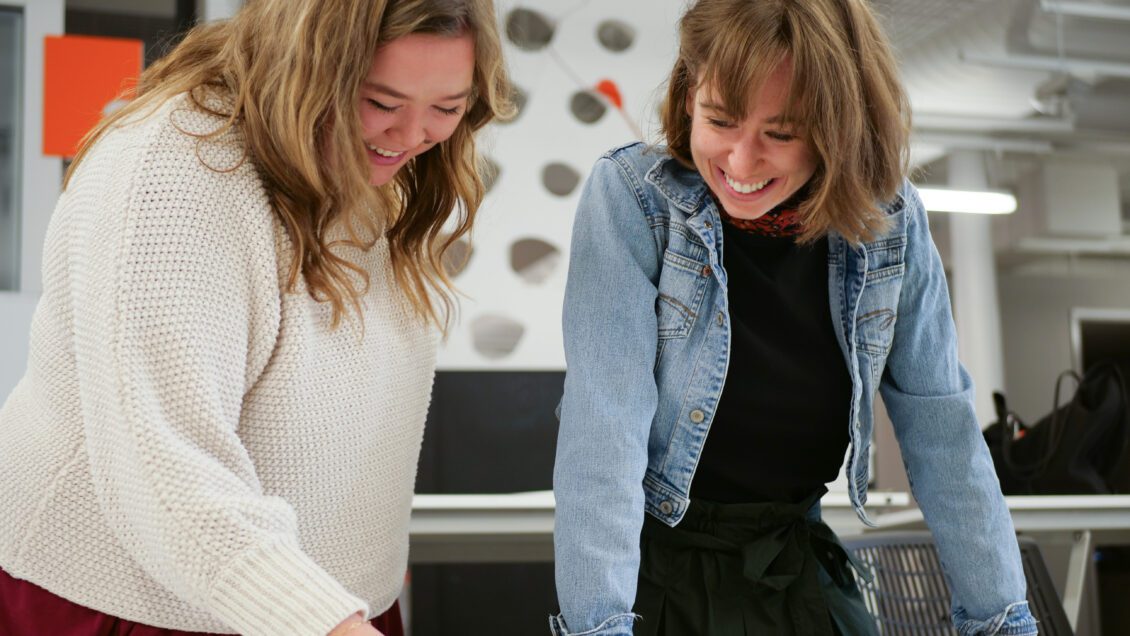For almost two centuries, the Charleston peninsula has been divided by the “Lowline.” Now Clemson University students are a part of the city’s effort to stitch itself back together.
The story of the Lowline begins in 1827 with the construction of the first railroad in South Carolina, which connected inland markets to the port of Charleston. Then in the 1950s, the path of the railroad was overshadowed by Interstate 26, which continues to soar over downtown Charleston. The space beneath the I-26 overpass has presented a conundrum to city leaders for decades, but in 2020 the city approved a Conceptual Master Plan to gradually turn the Lowline into a 40-acre park stretching from Mount Pleasant Street to Marion Square.
It’s an expansive vision in need of creative solutions, which are exactly what students in Clemson University’s Master of Resilient Urban Design (MRUD) program are training to develop.
“How people engage with student work is very different from how they engage with professional work,” said Morgan Gundlach, director of Civic Design for the city of Charleston. In addition to her role with the city, she also serves as an adjunct faculty member at the Clemson Design Center in Charleston. In the fall of 2022, she guided Clemson’s MRUD students as they designed both short and long-term solutions for the Lowline project.
The Lowline was divided into discrete sections for students to focus on. Nick Hannah, a North Charleston native, created designs for the northernmost end of the park.
“Really, it’s a nice spot to be at if it was taken care of, but that water makes it less desirable to be around, so I tried figuring out design strategies to work with the water rather than against the water,” Hannah said.

The water challenge is one that extends throughout the Lowline, as runoff from I-26 pours to the ground below. Because the Lowline extends across the highest point of the peninsula, water management solutions for the park have an impact on the entire city.
“Growing up here, I could see how water could alter traffic going toward downtown,” he said. Hannah studies bioretention cells throughout the semester, and his final project recommended the creation of raingardens with native plants that would not only mitigate flooding, but also filter the water and create a visually appealing park.
“Why it matters that it’s student work and not professionals theorizing on this is that students have the benefit of being so optimistic and so hopeful,” she said.
Optimism is a necessary ingredient in making the project work, as water runoff is only one of the challenges the park will need to address. Unifying the surrounding neighborhoods, mitigating gentrification and preventing crime are all goals the students had to factor into their designs. Because of the scope of the master plan—which would take years to enact—students were encouraged to look for not only permanent changes, but also intermediate solutions such as pop-up retail and event spaces to begin to make the space more inviting to the community.

While the city benefits from the student’s creativity, students benefit from addressing real-world problems.
“To get that experience rather than designing in the academic vacuum, partnering with the city was a pretty logical way to do that,” Gundlach said.
In Hannah’s project, strategically placed paths and bike lanes would connect the park to the surrounding neighborhoods. In addressing lighting—a recurring request from neighbors with safety concerns—his design opts for inviting string lights.
“It really could be the perfect hub,” he said. “It’s about how these physical objects make people feel emotionally.”
Gundlach said the students’ projects, which they presented in December to city officials and others, are “conversation starters” which can be used to spur future community input.
“We’ve showcased student work on other projects before and have had much better feedback from people when we’re soliciting input when there’s already something for them to latch on to,” she explained.
Get in touch and we will connect you with the author or another expert.
Or email us at news@clemson.edu

